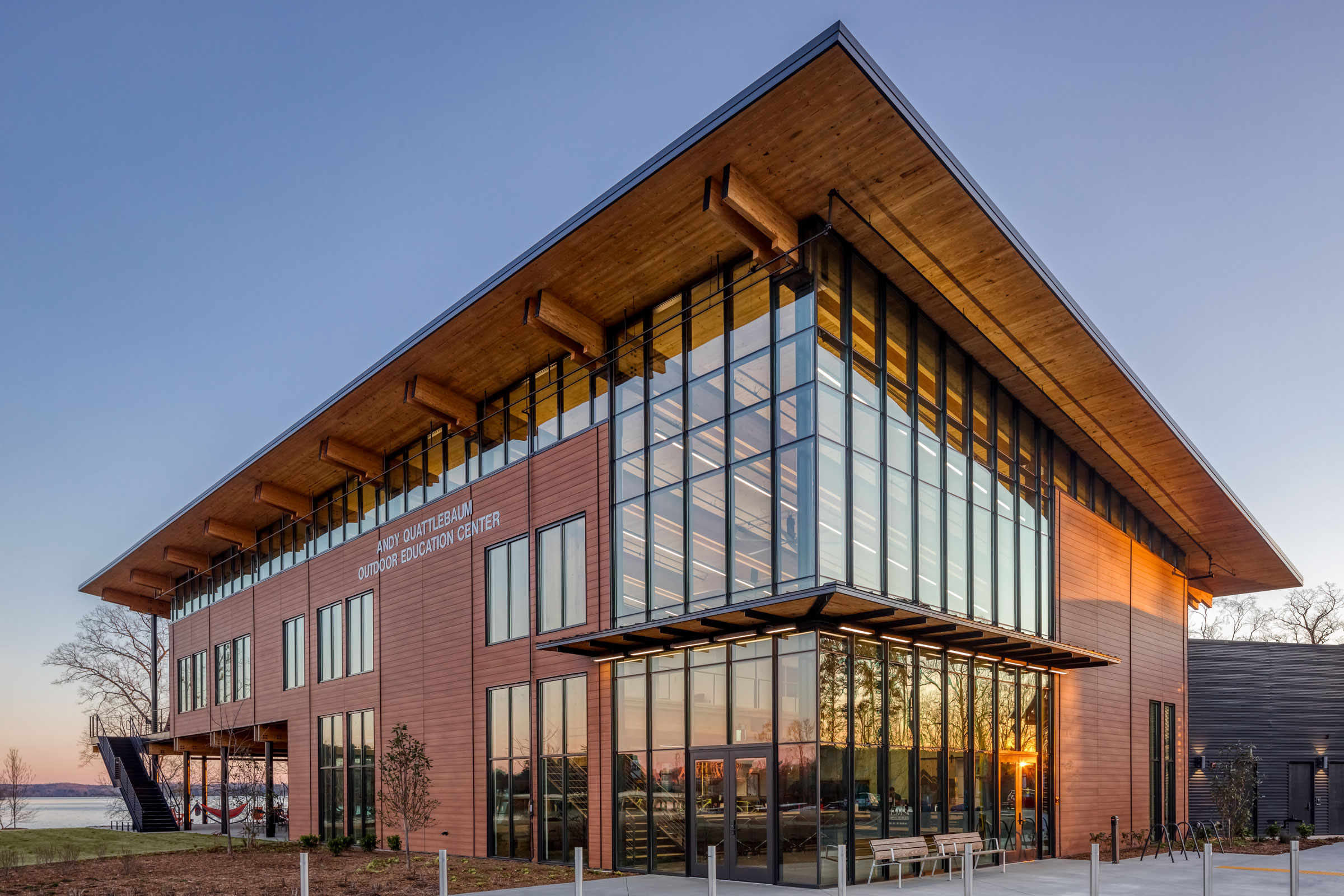
The new Andy Quattlebaum Outdoor Recreation Center at Clemson University was designed by Cooper Carry in collaboration with Clemson University’s Wood Utilization + Design Institute. Photo by Jonathan Hillyer
From the moment you enter the new Andy Quattlebaum Outdoor Recreation Center at Clemson University, you’re hit with a feeling of warmth and a sense of well-being on the lake. That’s partly because Southern yellow pine and local cypress make up the bulk of this project, while substantial windows offer plenty of daylight and impressive views. No matter where you look, you’re reminded of nature. “These biophilic elements are emphasized to encourage student wellness, activity, and interaction. We believe the center will become a hub for those looking for an on-campus escape,” says Brian Campa, principal at Cooper Carry, the architecture firm behind the center on this South Carolina campus.
Making a facility that supports Clemson’s commitment to the mental and physical health of its students was at the heart of this project. Cooper Carry collaborated with Clemson University’s Wood Utilization + Design Institute to bring this mass timber construction to life. “As advocates for sustainable, wood-based architectural design, the team was armed with a breadth of research to help inspire the Clemson leadership community to have an open mind to this level of innovation,” Campa says. The design team met often with the institute’s director to get her perspective in response to the structure. Campa says it was their research that led to the initial investigation into using Southern yellow pine for the structural base of the facility.
The center was designed to emphasize natural materials—most prominently mass timber—as the project sits on an expansive site in a forest and lake area. The building is designed as two wings that stretch along the lake’s edge. Large porches and patios are located along the building, too.
As for mass timber, this sustainable material is a wellness-driven and cost-effective alternative to other common building materials. As the first mass timber structure at Clemson, the recreation center serves as a symbol for using innovative design materials in the region. “We hope our fresh approach to the recreation center implores other universities, government agencies, and private developers to consider innovating through their new buildings with the material,” Campa says.
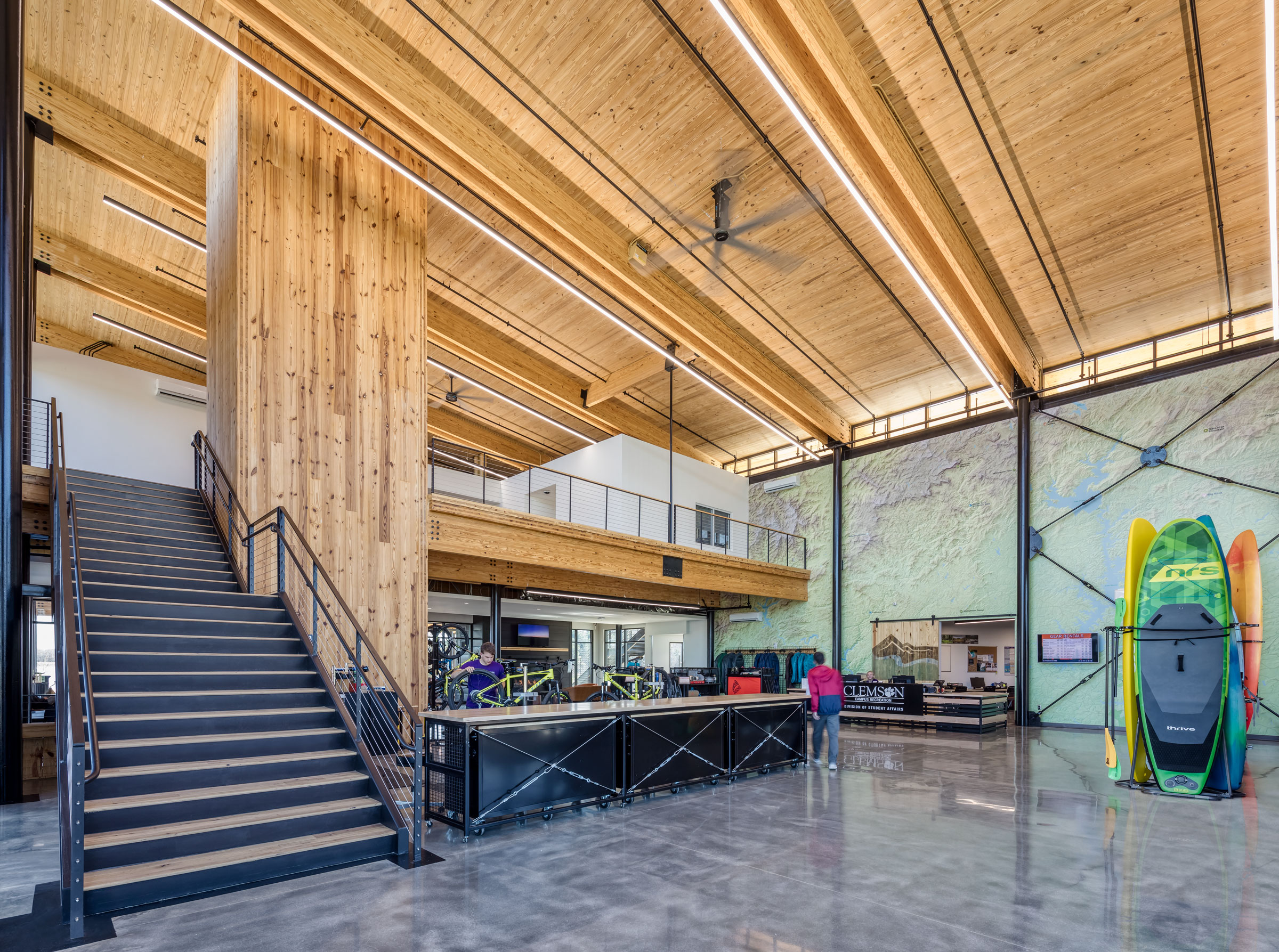
The Andy Quattlebaum Outdoor Recreation Center at Clemson University. Photo by Jonathan Hillyer
The Andy Quattlebaum Outdoor Recreation Center at Clemson University is designed to run on minimal heating and cooling loads to conserve operational costs. Large windows offer plentiful light with sensor-controlled lighting. Large fans reduce cooling loads, and passive cooling is used for boat storage spaces. Mechanical systems, monitored lighting, and passive cooling position the building to be net-zero ready, and it has the potential to be operated off-grid with photovoltaics. The project also incorporated environmentally sensitive design principles like orientation, large overhangs, recyclable materials, and carbon storing materials.
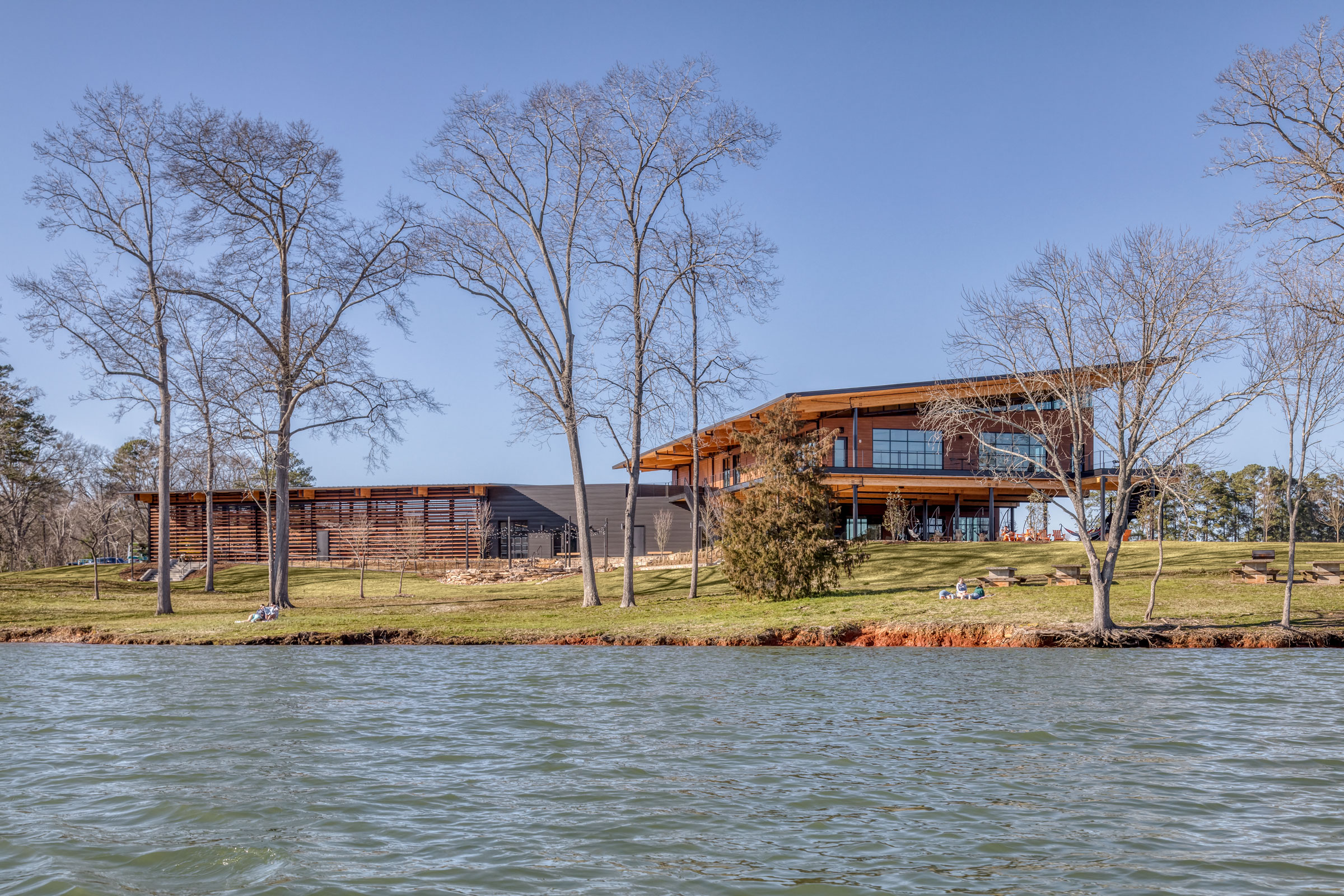
Andy Quattlebaum Outdoor Recreation Center at Clemson University, Photo by Jonathan Hillyer
Many biophilic design features were implemented to benefit student wellness on this project, including the consistent view of the exposed mass timber structure throughout the building. Expansive views to the lake, tree canopies, and natural landscapes provide a frequent reminder of place. The building’s covered terrace and second-level deck overlooking the lake give everyone a chance to be outside. The center supports student engagement with nature by anchoring a master planned precinct on-campus, including 140,000 square feet of synthetic turf fields, woodlands for hikes, beaches, and lake access.
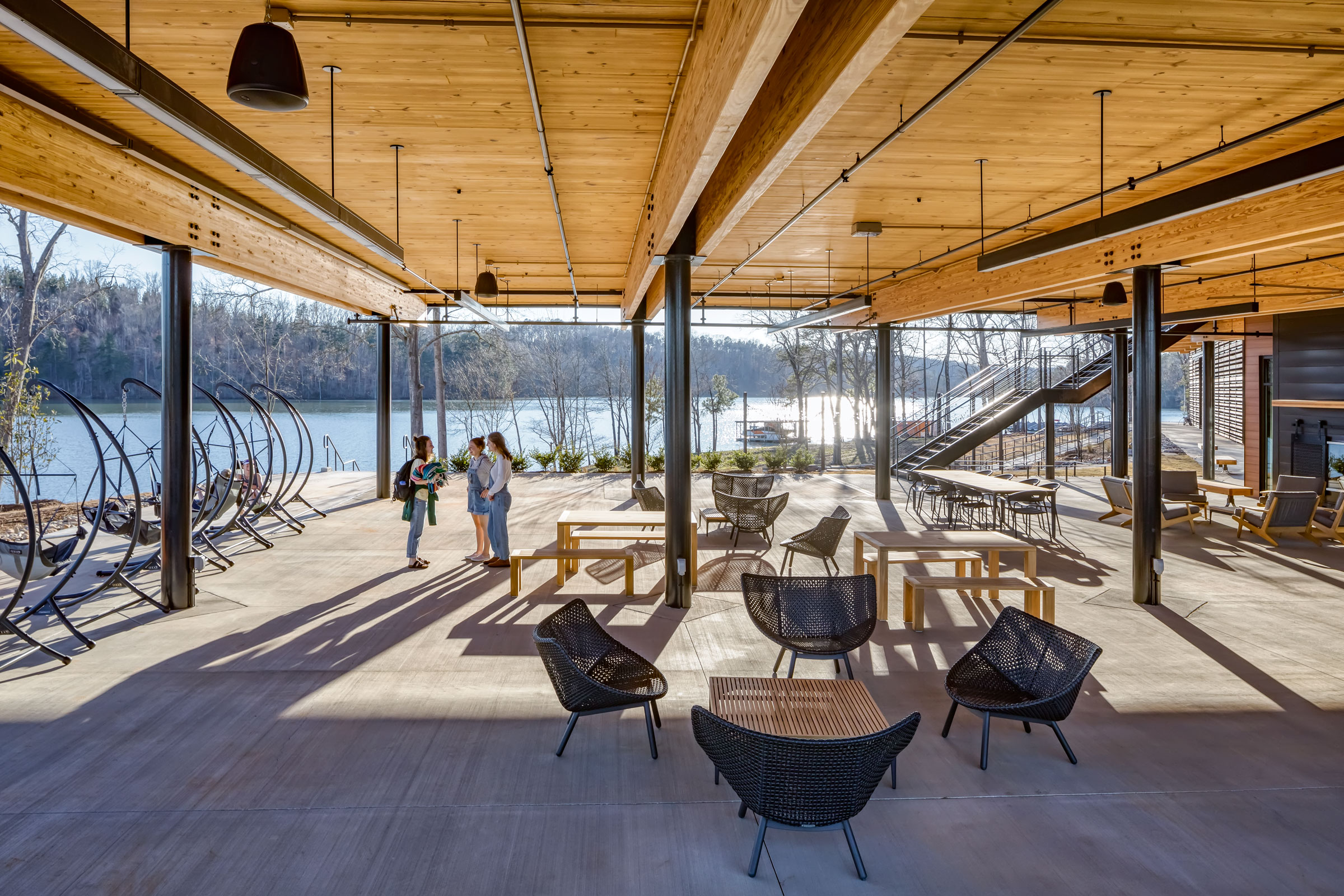
The Andy Quattlebaum Outdoor Recreation Center at Clemson University. Photo by Jonathan Hillyer
Cooper Carry used glue-laminated structural framing for the beams and cross-laminated timber slabs for the floors and roof structure. “The material is lauded for its ability to achieve long spans. This was one reason the cost of the material was competitive,” Campa says. “In terms of sustainability, both glue-laminated and cross-laminated timber framing offers significant sustainable advantages, including lower carbon footprint. In fact, wood will sequester carbon over the life of the building.”
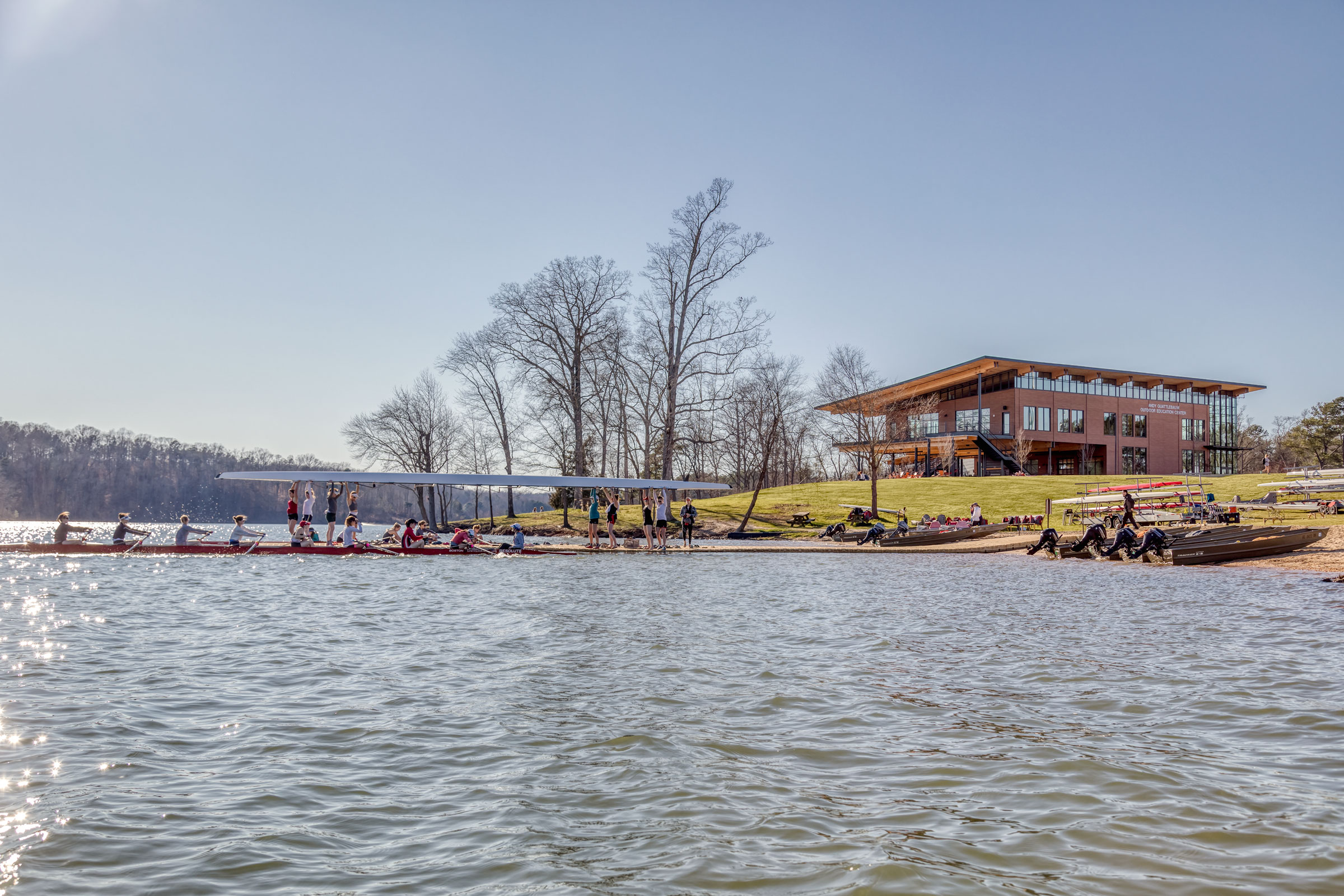
Andy Quattlebaum Outdoor Recreation Center at Clemson University, Photo by Jonathan Hillyer
Designed by Cooper Carry’s Higher Education Studio, this facility is the second mass timber facility in the US to use Southern yellow pine as the primary building material, according to the firm. “Through the inspiration of Clemson University’s Wood Utilization + Design Institute, we sourced the Southern yellow pine from an Alabama supplier. It was an opportunity to set a precedent for a locally sourced, responsibly harvested base material,” Campa says. By sourcing from Alabama, the team was able to significantly reduce the carbon footprint of shipping materials, and Campa says they experienced less construction costs, too. This project also incorporated local cypress, which performs well in exterior humid conditions, for the screen walls around the boathouse.
Floor Plans
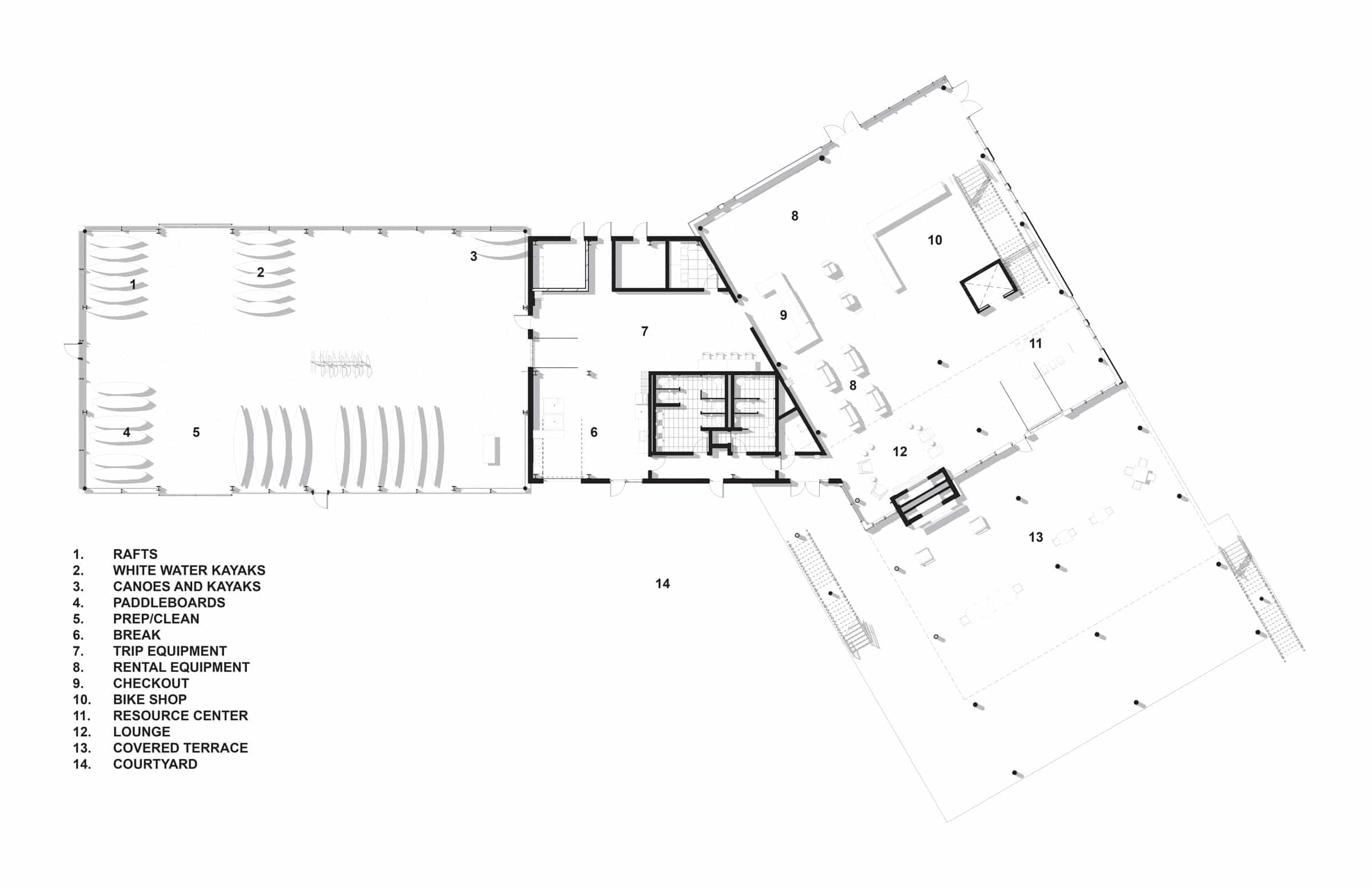
Drawing courtesy of Cooper Carry

Drawing courtesy of Cooper Carry
Project: Andy Quattlebaum Outdoor Recreation Center at Clemson University Location: Clemson, SC Completion: August 2019 Size: 16,000 square feet Architect: Cooper Carry Structural Engineer: Britt, Peters and Associates Landscape & Civil Engineers: SeamonWhiteside, Koons Environmental Design MEP Engineer: RMF Engineering Contractor: Sherman Construction Sustainability: Pattern R+D
